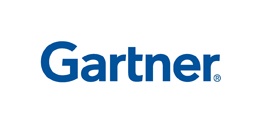Business needs change. Some changes occur to keep pace with innovation. Some changes are necessary to ensure you are compliant with regulations like the GDPR. These changes and the associated challenges are acute in highly regulated industries such as financial services, healthcare and life sciences. To sustain operations and remain resilient it’s important to have flexibility for data migration to, from and across cloud storage locations. Regular data management helps the IT team be more agile and able to respond quickly to data requests from the business.
What's insulating your business from disruption? Can you be sure that critical business and user applications are always available – even in the midst of technical changes?
Two fundamental concepts in education are scaffolding (developed by Jerome Bruner) and the Zone of Proximal Development (developed by Leo Vygotsky). The Zone of Proximal Development is, as the name suggests, an intangible zone where learners can gain new knowledge on their own by tapping into previous knowledge. Scaffolding is a teaching technique that allows all learners, regardless of previous knowledge, to be able to enter into the Zone of Proximal Development. As I work with IT staff and managers to train them on the use of our software tool, TransitionManager, it’s fun to see their excitement as they navigate through task-driven lab exercises and hang out in the Zone of Proximal Development.
Hurricanes, floods, and earthquakes may be pretty rare (thank goodness) but day-to-day threats can destroy data and ruin a business. That’s why it is critical for all businesses to have a current, active disaster recovery (DR) plan. But don’t panic. If you’ve completed a cloud migration project, perhaps it was your dress rehearsal and your chance to see how well prepared you really are.
The EU General Data Protection Regulation (GDPR) requirements were laid out in 2017 and just become a reality last month. As the May implementation date loomed, there has been much discussed about the impact of the pending legislation. But what seemed to be missing from the conversations was how IT will manage yet another variable when implementing hybrid IT strategies where hosting and service delivery is more federated and dynamic. In the complex environment of hybrid IT, you need to either know the blast radius when there is a data breech so you can make appropriate notifications and corrective actions. Conversely, when you add additional infrastructure, you must also account for any impact to existing applications and services. GDPR did not create these problems – these already existed in mixed physical, virtual and cloud environments.
Everyone is a genius. But if you judge a fish by its ability to climb a tree it will live its whole life believing it is stupid. ~ Albert Einstein
In today’s business environment, there are incredible demands to accelerate and respond to increasing expectations for intelligent, immediate, and immersive experiences coming from end users. Organizations must step up and be a part of the digital landscape to survive. The increasing complexity of connections between people, organizations and technology-based systems are changing data, application architecture, and security models. As this powerful technology wave accelerates, it puts increasing demands right at the door step of IT.
It used to be very easy for IT to operate in a secure and predictable manner. Applications had their own dedicated servers, storage, database, etc. and as a result, failures were self-contained and it was easy to pinpoint root cause issues.










